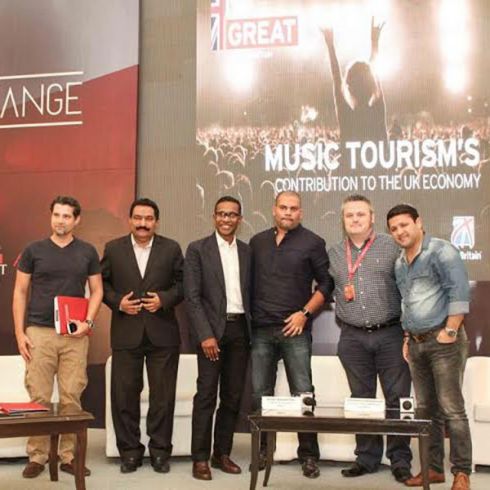
MUMBAI: The Exchange entered its second year with the continued ambition to promote the best UK and India could offer in terms of culture and music. The first panel of the day 'India in numbers' discussed the evolution of music consumption that has now entered the age of easy streaming and promising and competitive content aggregators.
The panel focused on numbers and figures to amplify their conclusions regarding aspects in the music industry that have direct or indirect effect on the artists and the consumers. At the same time the discussion extended to how labels and event organisers have independently raised the bar for themselves, thus ensuring that traditional forms of consuming music can co-exist in the ecosystem with other elements.
BigTree Entertainment founder and CEO Ashish Hemrajani moderated the discussion that discussed about how the ecosystem could survive and flourish along with healthy competition. Competition in the market, as it has been observed, never stalled the growth of companies, and over the years, the ways of consuming music have not only turned profitable for artists and services, but encouraged international organisers to invest in emerging markets like India.
President of Sony Music - India and Middle East, Sridhar Subramaniam acknowledged the adjustability of the Indian market and how answering to real issues in music distribution could end a lot of monetisation related complications. "With figures like 80-85 million cassettes, 40 million CDs, 200 million smartphones, We are reaching the largest addressable market in the world. 300 million people moving from pirated to revenue-able services." observed Subramaniam.
Around 400 million of the entire Indian population can afford buying music in any form, whereas the rest of the population that remains unbanked, act as a major obstacle. But the scenario is changing, and the labels and artists managements are exploring newer approaches to make the most of the growing space.
The events and the live space in India never faced severe issues of growth, according Live Viacom head Jaideep Singh. Singh's strong team has put together a series of live events and festivals resulting into the arrival of musicians like Slash and Skrillex in 2015. "The idea was to address 100 million people, and there is an evident growth in audience for all genres- Dance music, Rock or Comedy. We have six IPs dedicated to live events. The focus on destination-based festivals have really worked. The content around live space has not expanded so much, and we are building an experience to ensure half a million consumers turn into a full million in the coming years."
Streaming giant Saavn's reason for the impressive growth in this year could be credited to tapping onto regional languages and targeting tier two and tier three cities. Speaking about the same, Saavn CEO and co-founder Rishi Malhotra emphasised on Saavn's behaviour and approach towards the Indian market."Numbers and figures obviously are important, but what drives any business into growth is the behaviour. Saavn believes this is the largest music listening population in the world because music is in the bones of the country. The music Industry is working together, and India is turning to be a music and internet superpower. Two years ago, Saavn had five million users, 99 percent of which were Indians. Today, we have 18 million users, and Hindi dominates the most per cent of consumption with 65 percent, followed by English with 15 percent and Punjabi has five percent users and so and so forth. Music Streaming services are following the pattern of handsets dominance and growth in the market, and hence Saavn focused a lot on tier two and tier three cities."